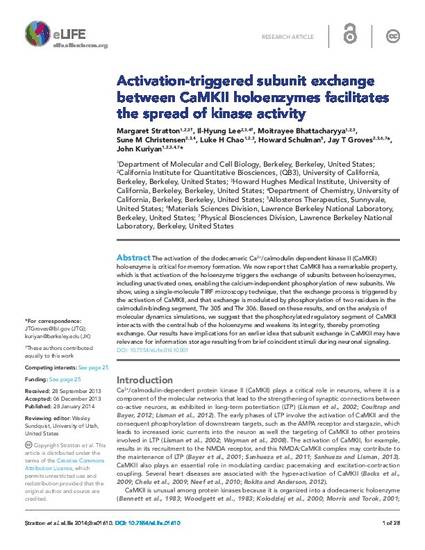
The activation of the dodecameric Ca2+/calmodulin dependent kinase II (CaMKII) holoenzyme is critical for memory formation. We now report that CaMKII has a remarkable property, which is that activation of the holoenzyme triggers the exchange of subunits between holoenzymes, including unactivated ones, enabling the calcium-independent phosphorylation of new subunits. We show, using a single-molecule TIRF microscopy technique, that the exchange process is triggered by the activation of CaMKII, and that exchange is modulated by phosphorylation of two residues in the calmodulin-binding segment, Thr 305 and Thr 306. Based on these results, and on the analysis of molecular dynamics simulations, we suggest that the phosphorylated regulatory segment of CaMKII interacts with the central hub of the holoenzyme and weakens its integrity, thereby promoting exchange. Our results have implications for an earlier idea that subunit exchange in CaMKII may have relevance for information storage resulting from brief coincident stimuli during neuronal signaling.
Available at: http://works.bepress.com/margaret-stratton/3/
